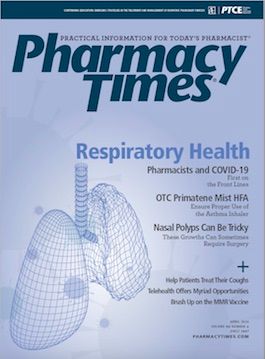Publication
Article
Pharmacy Times
Diversion Occurs in Hospice
Author(s):
Temptation exists because more than 90% of these patients are prescribed opioid medications for pain.
Medication diversion in hospice is a growing concern, especially in light of the opioid epidemic. More than 90% of patients in hospice and palliative care are prescribed opioid medications for pain management, and many individuals receive home care.1 Prescription medications at home can be a source of diversion among family and friends, especially those with a history of substance abuse. Pharmacists can play an important role not only in managing patients’ pain but also in preventing drug diversion.
In a study published in JAMA, investigators conducted a national survey of hospices from June to September 2018.2 Six hundred agencies were randomly selected and surveyed via phone or online about experiences, policies, and practices. Representatives from 371 hospices completed the surveys (62% response rate), and 31% of respondents reported at least 1 case of confirmed diversion in the prior quarter.
Individuals most frequently involved in drug diversion were generally family caregivers (39%), other family members (38%), and patients (34%). Additionally, the study reported 282 confirmed diversion cases within the prior 90 days. Fifty-eight percent of hospices reported at least 1 case of confirmed or suspected diversion within the past quarter. Confirmed plus suspected medication diversion was significantly associated with providing the majority of care at home, small hospice size, and using a prescription drug monitoring program.2
This study provides important information about drug diversion in the hospice setting. Study limitations included that surveys involved self-reported data and that cause and effect could not be established. Future studies are needed to shed further light on the balance between drug diversion prevention and effective pain management.
The Hospice Foundation of America and the University of Maryland have developed recommendations for preventing medication diversion in hospice care.3 Educating families, patients, and staff members about opioid safety and medication management is important to balance prevention efforts with quality of care, and pharmacists can play an important role in the process. Pharmacists should screen prospective employees for a history of substance abuse. They should also frequently conduct and document medication monitoring, including pill counts and transdermal patch use.
Pharmacists and other health care professionals should also educate families about the importance of appropriate medication disposal after changes to the drug therapy or after the patient’s death.3
Jennifer Gershman, PharmD, CPh, is a drug information pharmacist and Pharmacy Times® contributor who resides in South Florida.
REFERENCES
- Cagle JG. Strategies for detecting, addressing, and preventing drug diversion in hospice and palliative care (P15). J Pain Symptom Manage. 2019;57(2):360. doi: 10.1016/j.jpainsymman.2018.12.023.
- Cagle JG, McPherson ML, Frey JJ, et al. Estimates of medication diversion in hospice. JAMA. 2020;323(6):566-568. doi:10.1001/ jama.2019.20388.
- Cagle JG, Ware O. 15 recommendations for preventing medication diversion & misuse in hospice care. Hospice Foundation of America website. hospicefoundation.org/hfa/media/Files/Preventing-Medication- Diversion-in-Hospice-Recommendations-10-28-2019.pdf. Accessed February 15, 2020.






